Asiatic Lion
- February 8, 2024
- 0 comment
The Asiatic lion, scientifically known as Panthera leo persica, stands as a majestic emblem of the Indian subcontinent’s wildlife heritage. This subspecies of lion once roamed across vast territories, spanning from the Mediterranean to the northeastern regions of India. However, today, its existence is confined to the Gir Forest National Park and its surrounding areas in the western state of Gujarat, India. Slightly smaller in size compared to its African counterparts, the Asiatic lion bears a distinct fold of skin along its belly. Its habitat primarily consists of dry deciduous forests, savannas, and scrublands.
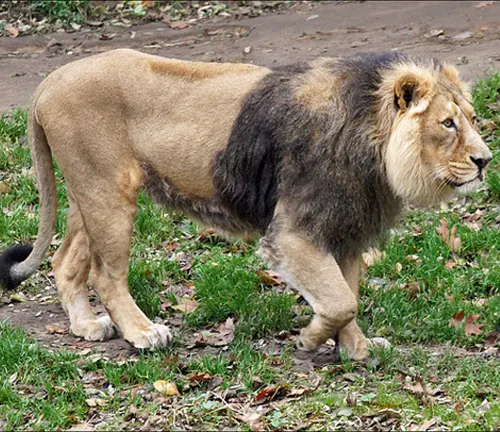
As a carnivorous predator, the Asiatic lion preys on various animals, including deer, antelope, and sometimes, livestock. Despite being revered and protected, the Asiatic lion remains endangered due to habitat loss, poaching, and human encroachment. Conservation efforts have seen some success, with measures such as habitat protection and anti-poaching initiatives showing positive outcomes. However, the small and isolated population remains vulnerable to threats like disease outbreaks. Efforts to establish additional populations in suitable habitats beyond Gir are being considered to ensure the long-term survival of this iconic species.
The Asiatic lion serves not only as a symbol of wild beauty but also as a reminder of the importance of conservation efforts in preserving our natural heritage.
| Aspect | Description |
|---|---|
| Scientific Name | Panthera leo persica |
| Habitat | Dry deciduous forests, savannas, scrublands |
| Location | Gir Forest National Park, Gujarat, India |
| Size | Slightly smaller than African lions |
| Distinctive Feature | Fold of skin along belly |
| Diet | Carnivorous, preys on deer, antelope, livestock |
| Conservation Status | Endangered |
| Threats | Habitat loss, poaching, human encroachment |
| Conservation Efforts | Habitat protection, anti-poaching initiatives |
| Challenges | Vulnerable to disease outbreaks, small population |
| Conservation Goal | Establishment of additional populations |
Habitat and Distribution

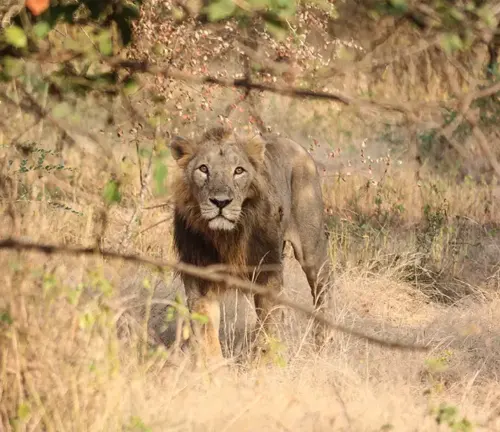
The Asiatic lion, Panthera leo persica, once roamed across vast swathes of territory, from the Mediterranean to the northeastern regions of the Indian subcontinent. However, today, its habitat is restricted primarily to the Gir Forest National Park and surrounding areas in the western state of Gujarat, India. These lions inhabit dry deciduous forests, savannas, and scrublands, finding refuge amidst the rugged terrain of the Gir region. Despite the limited range, efforts are being made to safeguard and expand their habitat to ensure the survival of this iconic species.
Physical Characteristics
Distinguished by its regal appearance, the Asiatic lion bears a striking resemblance to its African counterparts, albeit with some notable differences. They are slightly smaller in size, yet no less formidable in stature. One of the distinctive features of the Asiatic lion is the fold of skin that runs along its belly, adding to its majestic allure. With a muscular build and a mane that varies in length and thickness among individuals, these lions command attention and reverence in their natural habitat.
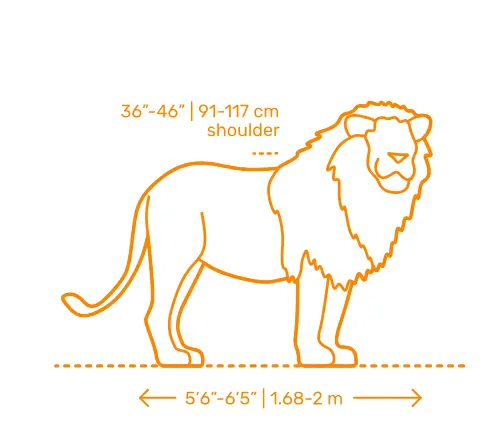
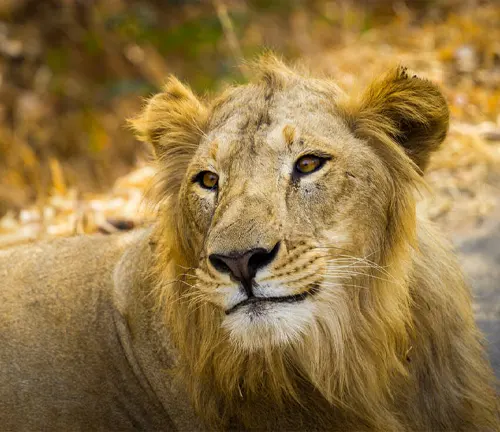
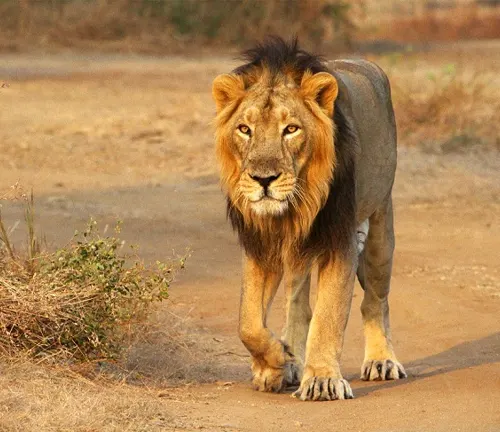
- Size: Asiatic lions are slightly smaller in size compared to their African counterparts, with males typically weighing between 160 to 190 kilograms (350 to 420 pounds) and females weighing around 110 to 120 kilograms (240 to 260 pounds).
- Mane: Male Asiatic lions have a less developed mane compared to African lions. Their mane is shorter and less conspicuous, often appearing as a shaggy ruff around the neck and shoulders.
- Coloration: Asiatic lions typically have a tawny-yellow coat, with variations in shade depending on individual genetics and environmental factors. Their fur may range from pale yellow to deep ochre, often with faint rosettes or spots visible on younger individuals.
- Facial Features: Asiatic lions have broad heads with powerful jaws, well-adapted for hunting large prey. They possess a prominent muzzle and strong teeth designed for tearing flesh.
- Ears and Tail: Their ears are rounded and tufted with black fur at the tips. The tail of an Asiatic lion is typically longer and more tufted compared to African lions, serving as a visual signal during social interactions.
- Build: Asiatic lions have a robust and muscular build, well-suited for their role as apex predators. Their limbs are powerful, enabling them to chase down prey and defend their territory against rivals.
- Distinctive Belly Fold: One of the most notable features of the Asiatic lion is the presence of a fold of loose skin along their belly. This fold, unique to the Asiatic subspecies, gives them a distinct appearance compared to other lion populations.
Diet and Hunting
As apex predators, Asiatic lions are carnivores with a diverse palate. Their diet primarily consists of ungulates such as deer, antelope, and occasionally, livestock. Hunting in coordinated packs or solitary pursuits, these lions employ stealth and cunning to secure their prey. Their powerful jaws and keen senses make them formidable hunters, capable of bringing down prey several times their size. However, with human settlements encroaching upon their habitat, conflicts over livestock predation have emerged as a challenge for conservationists striving to balance human livelihoods with lion conservation efforts.


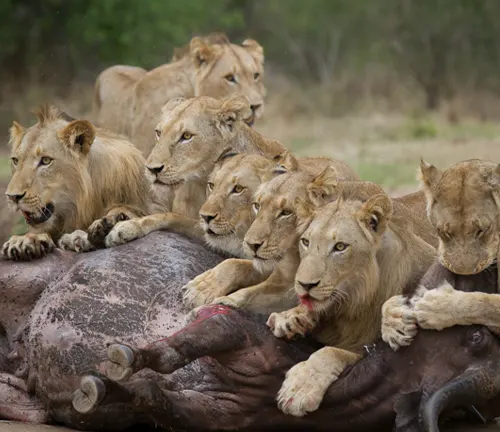
- Prey Selection Asiatic lions primarily prey on ungulates such as deer, antelope, and occasionally, livestock. They may also target smaller mammals when larger prey is scarce.
- Hunting Strategy Asiatic lions employ both solitary and cooperative hunting strategies. While solitary lions may stalk and ambush prey on their own, cooperative hunting is more common among lionesses within a pride. They work together to encircle and ambush their prey, using stealth and coordinated attacks to overwhelm and bring down larger animals.
- Stalking and Ambush Asiatic lions are skilled stalkers, utilizing vegetation and terrain to conceal themselves from their prey. They patiently wait for the opportune moment to launch a surprise attack, often targeting the weakest or most vulnerable members of a herd.
- Chase and Takedown Once a lion has selected its target, it will give chase, relying on bursts of speed to close the distance between itself and the prey. Lions are capable of reaching speeds of up to 50 miles per hour (80 kilometers per hour) in short sprints. Upon catching their prey, lions use their powerful jaws and claws to deliver a fatal bite or suffocate the animal.
Behavior and Social Structure
Intriguing glimpses into the behavior and social structure of Asiatic lions reveal a complex tapestry of familial bonds and territorial dynamics. Unlike their African counterparts, Asiatic lions exhibit less pronounced social structures, with smaller pride sizes and fewer adult males per pride. Females typically form the core of the pride, responsible for hunting and nurturing the young. Male lions play a vital role in defending the pride’s territory from rival males and predators. However, with increasing anthropogenic pressures and fragmented habitats, the intricate balance of lion society faces unprecedented challenges, underscoring the urgency of conservation initiatives aimed at preserving these ancient bonds.
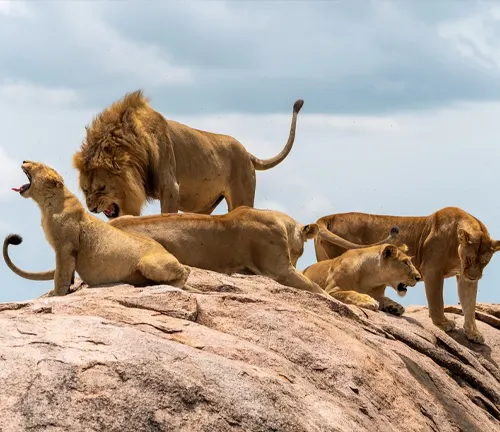
Pride Structure and Cooperation
The formation of prides among Asiatic lions is crucial for cooperation in hunting, defense of territory, and raising offspring. Within prides, lionesses collaborate to coordinate hunts, care for cubs, and maintain social cohesion. This cooperative behavior enhances their chances of survival in the challenging environment of the Gir Forest.
Territorial Defense and Male Coalitions
The establishment and defense of territories are vital for Asiatic lions to secure access to resources and mating opportunities. Dominant males form coalitions to defend territories from rival males, ensuring the stability and integrity of their pride’s territory. Territorial behavior helps regulate population densities and reduce conflicts over resources.


Maternal Care and Cub Rearing
Lionesses play a central role in nurturing and protecting their cubs, passing down essential survival skills and social behaviors. Maternal care ensures the survival and well-being of the next generation of Asiatic lions, contributing to the long-term stability and sustainability of lion populations in the Gir region.
Different Species
Barbary Lion (Panthera leo leo)
Also known as the North African lion, the Barbary lion once inhabited the Atlas Mountains of North Africa, including regions of Morocco, Algeria, and Tunisia. While technically not an Asiatic lion, it was a subspecies of lion that roamed a region adjacent to the Mediterranean, and its extinction is often mentioned in discussions about the decline of lion populations.

Cape Lion (Panthera leo melanochaita)
The Cape lion was a subspecies of lion that inhabited South Africa, particularly the Cape Province. While primarily an African lion, it’s worth mentioning in the context of lion species that were once present in different regions outside of their current ranges.
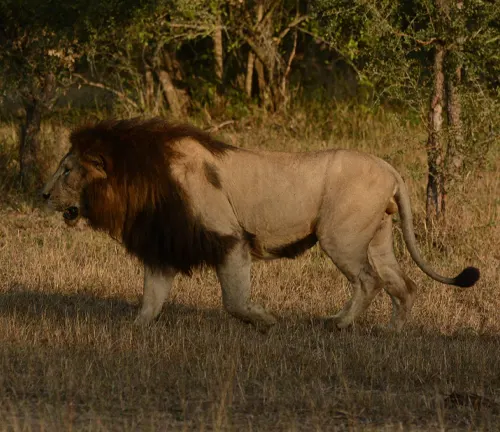
Frequently Asked Question (FAQs)
- Where do Asiatic lions live?
Asiatic lions primarily inhabit the Gir Forest National Park and surrounding areas in the Indian state of Gujarat. - How many Asiatic lions are left in the wild?
As of the latest estimates, there are approximately 500 Asiatic lions remaining in the wild. - What is the main threat to Asiatic lions?
The main threats to Asiatic lions include habitat loss, poaching, human-wildlife conflict, and disease outbreaks. - Are Asiatic lions endangered?
Yes, Asiatic lions are classified as endangered on the IUCN Red List due to their small and fragmented population. - Do Asiatic lions live in prides like African lions?
Yes, Asiatic lions do live in prides similar to African lions, although their pride sizes tend to be smaller. - What do Asiatic lions eat?
Asiatic lions primarily feed on ungulates such as deer, antelope, and occasionally, livestock. - How big are Asiatic lions compared to African lions?
Asiatic lions are slightly smaller in size compared to African lions. - Can Asiatic lions be found in zoos outside of India?
Yes, Asiatic lions can be found in zoos outside of India, though they are relatively rare compared to African lions in captivity. - What conservation efforts are in place to protect Asiatic lions?
Conservation efforts include habitat protection, anti-poaching measures, community involvement, and breeding programs in captivity. - Are there any plans to reintroduce Asiatic lions to other parts of their historical range?
Some conservationists have proposed reintroduction programs to establish additional populations in suitable habitats beyond their current range. - How do Asiatic lions differ from other lion subspecies?
Asiatic lions are slightly smaller and have a distinctive fold of skin along their bellies compared to African lion subspecies. - What is the significance of the Gir Forest National Park for Asiatic lion conservation?
The Gir Forest National Park serves as the last stronghold and primary habitat for Asiatic lions, making it crucial for their conservation. - How do Asiatic lions adapt to their habitat in the Gir Forest?
Asiatic lions have adapted to the dry deciduous forests and scrublands of the Gir region, relying on stealth and cunning to hunt their prey. - Do Asiatic lions face conflicts with humans living near their habitat?
Yes, Asiatic lions do face conflicts with humans, particularly due to livestock predation and encroachment into human settlements. - What is the lifespan of Asiatic lions in the wild and in captivity?
In the wild, Asiatic lions typically live up to 15 years, while in captivity, they can live slightly longer, up to 20 years or more.














Leave your comment